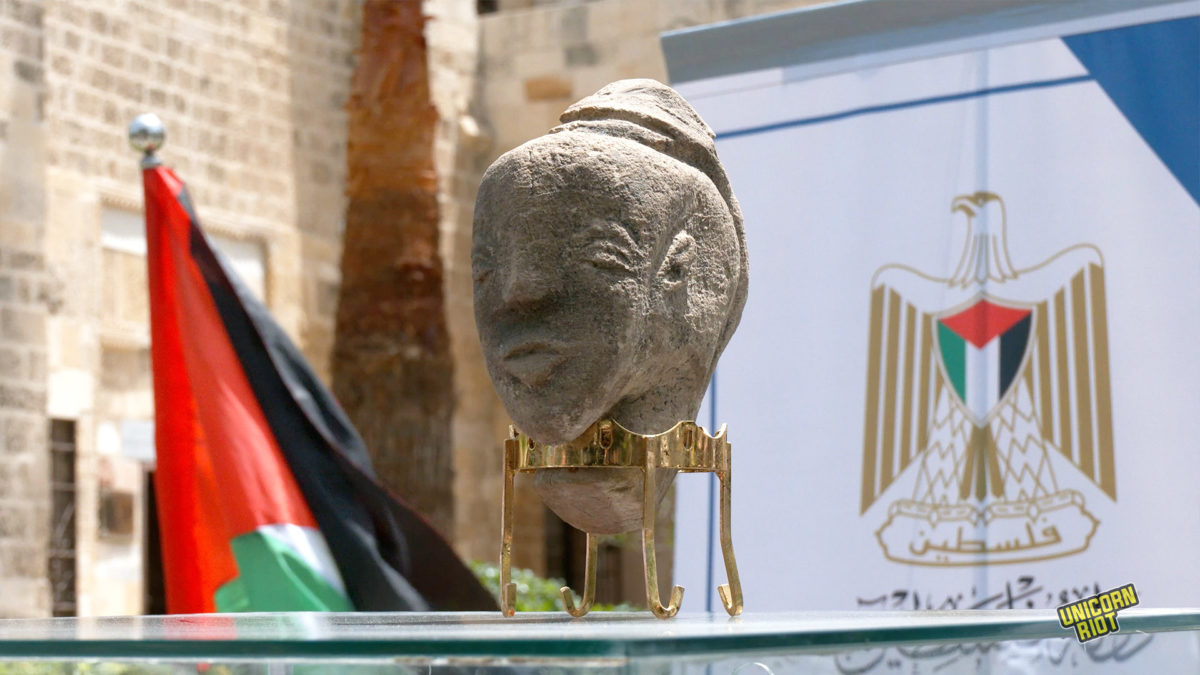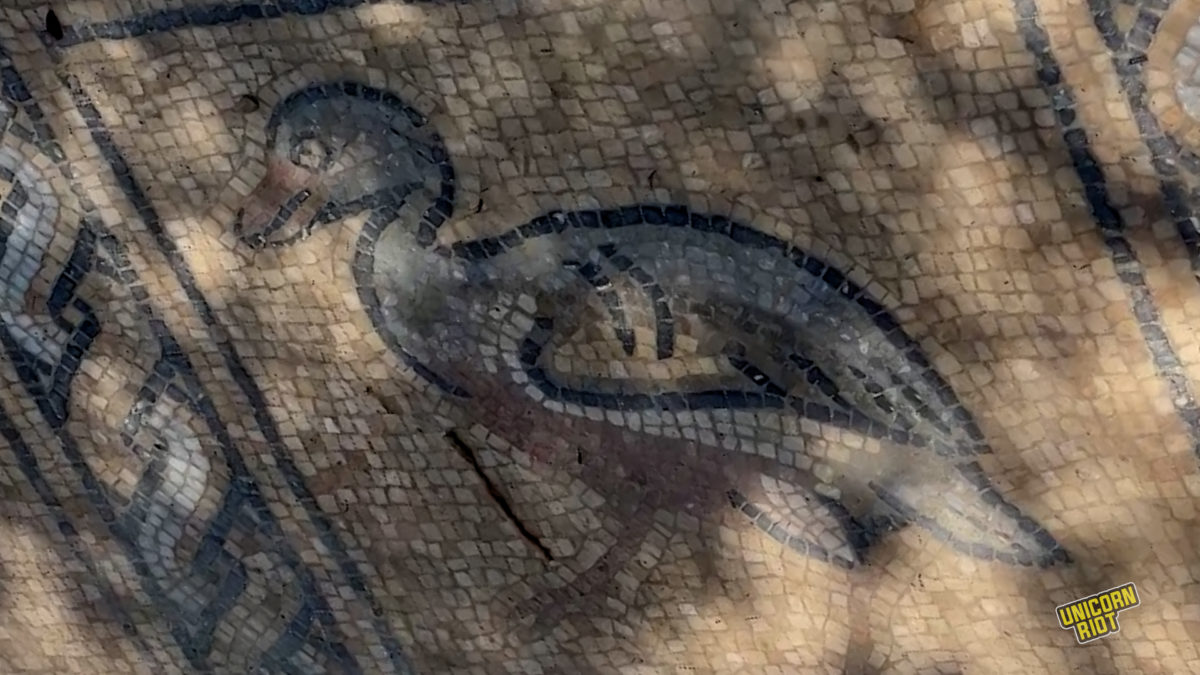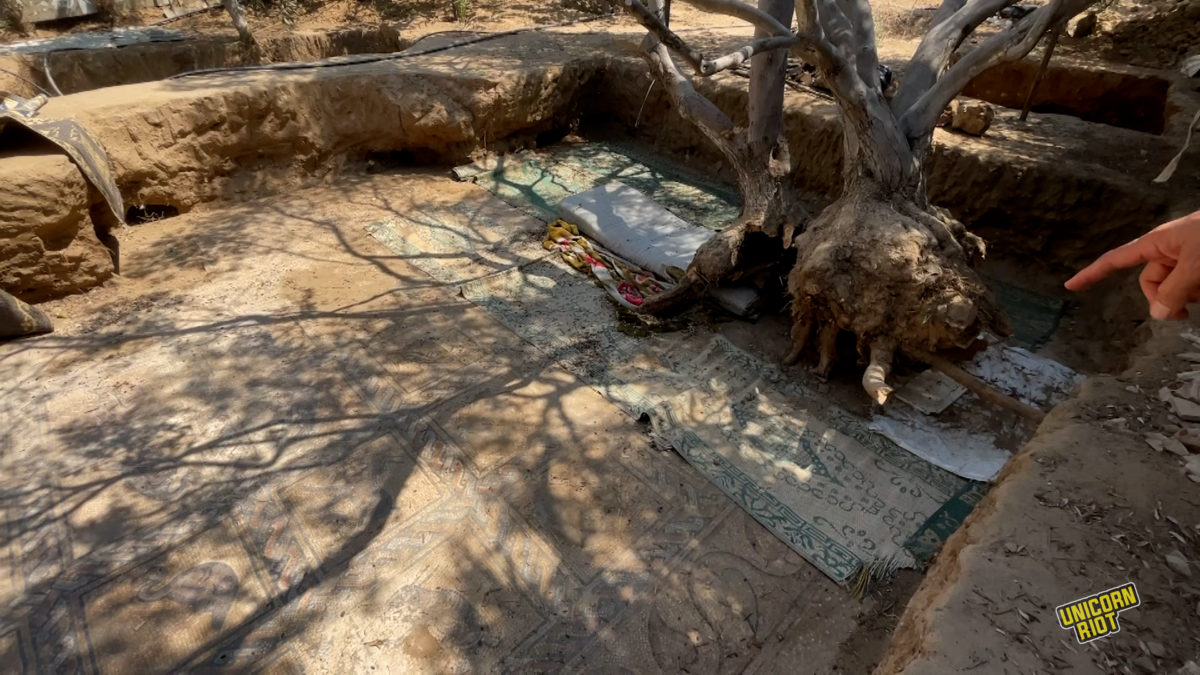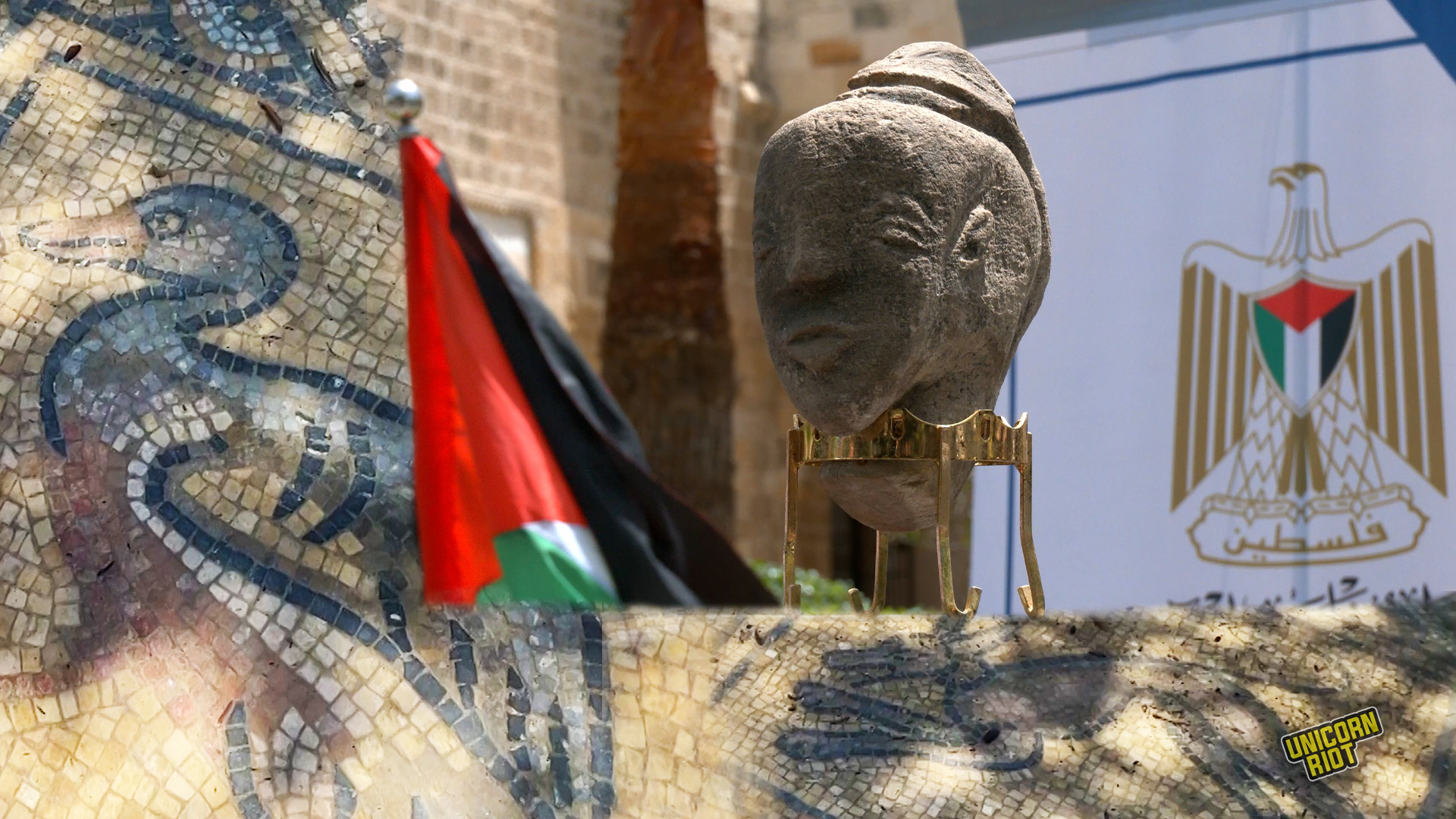Ancient Antiquities Discovered in Palestine’s Gaza Strip
Gaza Strip, Palestine – Two major discoveries in 2022 showcase thousands of years of Arab existence on Palestinian lands.
A 4,500-year-old statue of the Canaanite goddess Anat and a 1,500-year-old tiled mosaic floor were both separately found last year in the Gaza Strip, a coastal area of 140 square miles sandwiched between Israel and Egypt off the coast of the Mediterranean Sea and teeming with tales of history.
4,500-Year-Old Canaanite Statue of the Goddess of Love
While cultivating his land, a farmer unearthed an ancient Canaanite statue of what experts say depicts the Goddess Anat. Found in the city of Khan Yunis, in the southern Gaza Strip, the statue with only a head, stands a bit over eight inches tall (21cm) and is made of limestone.
A serpent is attached to the crown of the head of the statue to represent strength and invincibility. According to Canaanite mythology and belief, Anat was the goddess of love, beauty and war.
Researcher and historian Walid Al-Akkad, owner of the Al-Akkad Museum in Khan Yunis, said that the snake on the head of the statue indicated “strength and love and is evidence of the strength of the Canaanite civilization in that era.”
The Director General of Antiquities and Cultural Heritage in Gaza, Jamal Abu Rida, said the statue is 4,500-years-old and dates back to the Canaanite period of 2,500 BCE.
The discovery occurred in the Sheikh Hamouda area of Khan Yunis, an archaeological site in the east of Khan Yunis that was the ancient commercial land route for successive civilizations in Palestine.
Al-Akkad added that the area in which the statue was found is considered a high mound, inhabited by many civilizations. In the same area Akkad had previously found a coffin made of soft lead weighing 231 pounds (105 kilograms) and containing coins dating back to the Byzantine period.
“No other statue resembles this one in Gaza City,” said Nariman Khaleh the Director of Qasr al-Basha, the Pasha’s Palace Museum in Gaza City, where the ancient statue is now on display.


1,500-Year-Old Complex Floor Mosaic
Also in 2022, just a half a mile from the Israeli border in the Gaza Strip, another Palestinian farmer made an amazing discovery. In his backyard, he found a well-preserved and vividly colored mosaic floor likely from the period between the fifth and seventh centuries.
The well-preserved pavement includes 17 iconic images of beasts and birds.
“These are the most beautiful mosaic floors ever discovered in Gaza, both in terms of the quality of the graphic representation and the complexity of the geometry,” said Rene Elter, an archaeologist from the French School of the Bible and Archeology in Jerusalem.
Elter said proper excavations should be carried out to determine exactly when it was built and whether it was part of a religious or secular complex.


The British Encyclopedia defines “Canaan” as something that is “always cent[ered] on Palestine.” They further note that Palestine was inhabited by Canaanites of Semitic origins before the Israelis, and that the name Canaan and the Canaanites appeared in Egyptian and Phoenician cuneiform writings since about the fifteenth century BCE. The encyclopedia adds that the credit for our knowledge of the history of Canaan is due to archaeological discoveries as well as ancient blogs such as the Amarna letters.
According to the American archaeologist James Henry Breasted (pdf), the Canaanites are one of the Arab tribes that have settled in Palestine since the year 2,500 BCE. The ancient civilizations of Canaan and Phoenicia, both of Semitic Arab origin, settled in Palestine and Lebanon through a single migration that set out from the Arabian Peninsula in the third millennium BC.

The Canaanite civilization also extended to the Syrian regions, such as Ras Shamra (Ugarit), which is one of the important Canaanite civilization centers since the first half of the second millennium BCE, as well as the Kingdom of Ebla near Aleppo.
Neither of the discoveries noted above takes away the fact that others have lived in these lands for centuries as well. Jewish people maintain their ties to this land go back 3,700 years.
The Gaza Strip was a busy trade route between Egypt and the Levant in ancient times and is full of remnants of ancient civilizations, from the Early Bronze Age to the Islamic and Ottoman eras.
Yet, despite being a land so rich in history and archaeological areas dating back centuries, treasures of ancient civilizations are rarely protected in Palestine. An ongoing Israeli siege on Gaza and repeated bombings by Israeli forces over the last decades have negatively impacted archaeological sites and the ability to excavate. Intersecting with these attacks is the lack of concern by the ruling parties in Palestine, which negatively affect antiquities and therefore tourism in the Gaza Strip.
Found by farmers, the two discoveries of 2022 have helped push the conversation on providing better protection for antiquities in Gaza.
With several groupings of fragile sites threatened by a lack of awareness and resources, as well as the continuing danger of conflict between Israel and local Palestinian militants, many are hoping humanity can prevail in saving relics of the old world.
Niko Georgiades contributed to this report for Unicorn Riot.
For more from Palestine and pro-Palestine protests click on link below.

Follow us on X (aka Twitter), Facebook, YouTube, Vimeo, Instagram, Mastodon, Threads, BlueSky and Patreon.
Please consider a tax-deductible donation to help sustain our horizontally-organized, non-profit media organization:



